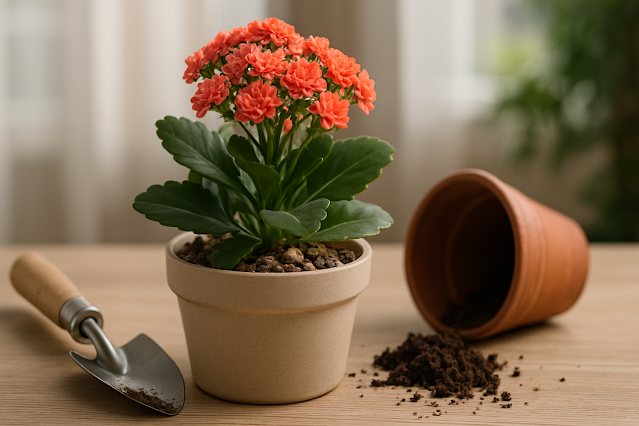Nurturing Kalanchoe: A Fresh Guide to Growing This Resilient Bloom
For gardeners seeking vivid color with minimal upkeep, Kalanchoe offers a perfect balance. Native to arid regions, this thick-leaved succulent flourishes with little intervention, yet rewards with brilliant clusters of flowers. Here's a step-by-step approach to cultivating Kalanchoe with precision and care—minus the guesswork.
Finding the Ideal Environment
Begin by placing your Kalanchoe where light is plentiful but not harsh. Filtered sunlight near a bright window indoors or a shaded spot with gentle morning rays outdoors will help it thrive. Too much direct exposure can cause the foliage to scorch, while insufficient light may lead to leggy, pale growth.
Preparing the Right Soil Base
This plant performs best in gritty, quick-draining soil. Combine standard garden soil with a generous portion of gritty sand or pumice to create a loose, fast-draining foundation ideal for succulents. If growing in pots, choose containers with multiple drainage holes. A soggy base is the enemy of any succulent, and Kalanchoe is no exception.
Watering with Intention
Hydration is essential, but overwatering can spell disaster. Wait until the surface soil feels dry before watering. When you do water, do so thoroughly, allowing excess to drain fully. Avoid misting the foliage or letting water sit at the crown. During cooler months, watering frequency should be reduced considerably.
Feeding the Plant Strategically
Though not a heavy feeder, Kalanchoe responds well to light monthly feeding during its active months. Use a diluted, balanced fertilizer—preferably one formulated for flowering houseplants or succulents. Avoid applying any fertilizer while the plant is dormant in winter, as it requires minimal nutrients during this inactive phase.
Managing Growth and Shape
To maintain a tidy appearance, trim faded flower stalks once blooming ends. Pinching back the longer stems encourages a fuller, more compact shape. Avoid excessive pruning, as this plant naturally grows in a neat, rounded form when properly cared for.
Climate Awareness
Kalanchoe enjoys warmth but doesn’t tolerate frost. If nighttime temperatures start falling under 50°F (10°C), it’s best to relocate your Kalanchoe indoors to shield it from the cold. Indoors, it adapts well to household climates but prefers being away from heating vents or drafty windows.
Propagation the Easy Way
Expanding your collection is simple. Select a firm, unblemished leaf or a short stem segment, and allow it to air-dry for a couple of days to form a protective callus. Once a callus forms, nestle it into slightly damp soil. Within several weeks, tiny roots will emerge, marking the quiet beginning of a fresh plant’s life.
Closing Thoughts
Growing Kalanchoe isn’t about constant attention—it’s about consistency and understanding its simple preferences. With thoughtful placement, proper drainage, and a mindful watering rhythm, this succulent will thrive with elegance. Whether you're a seasoned grower or a curious beginner, this radiant plant adds color and joy with very little demand in return.

Comments
Post a Comment